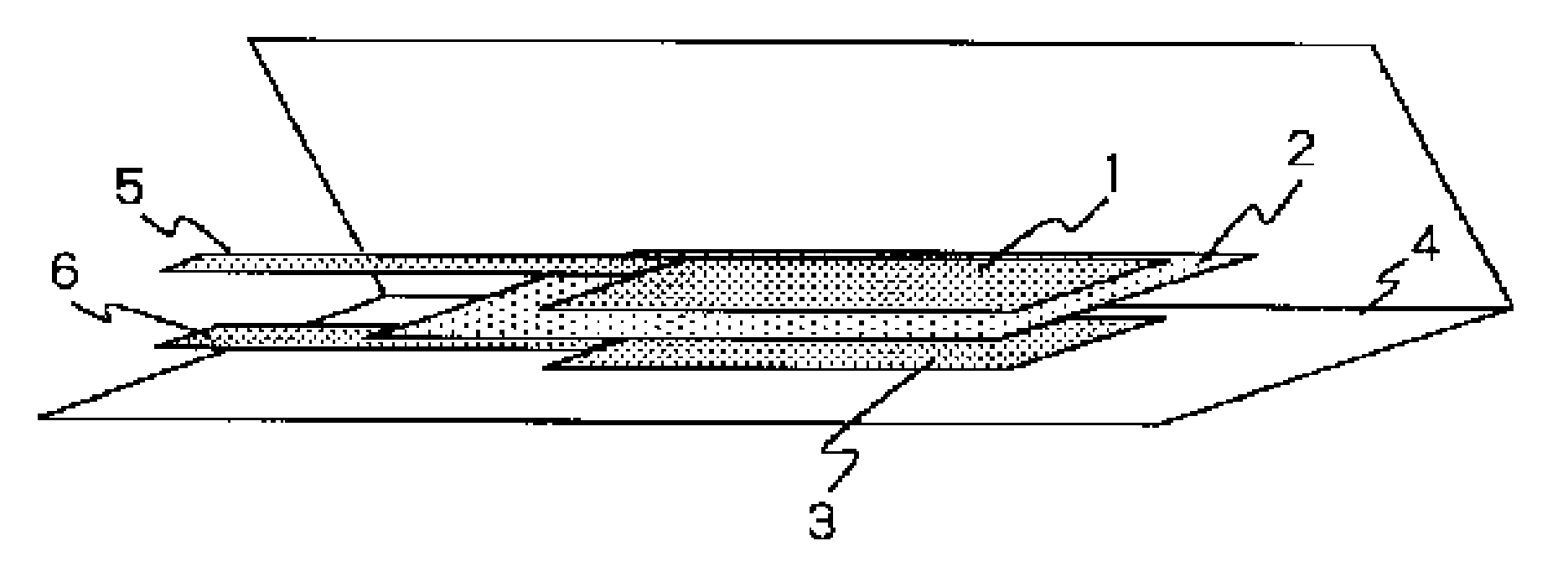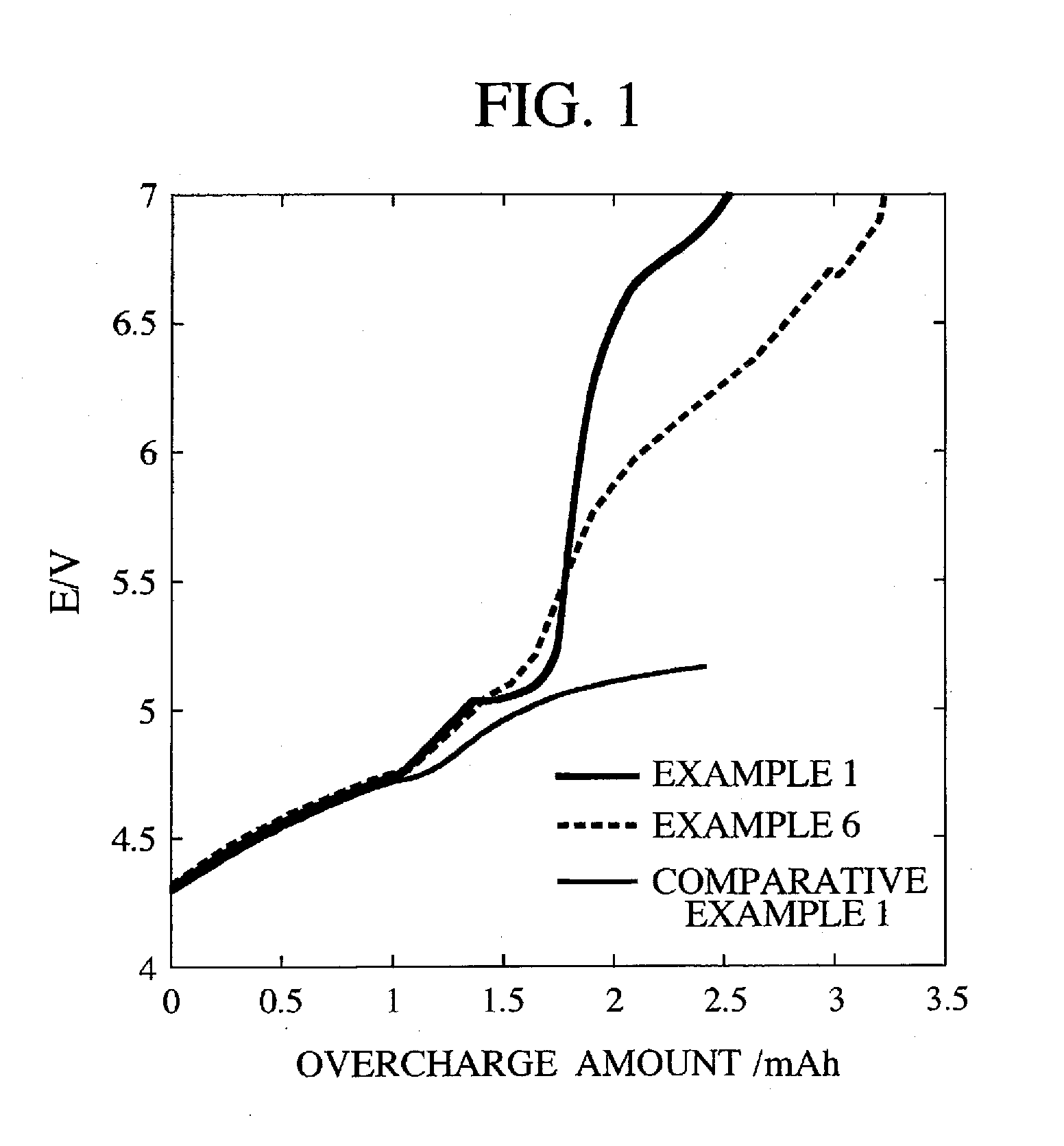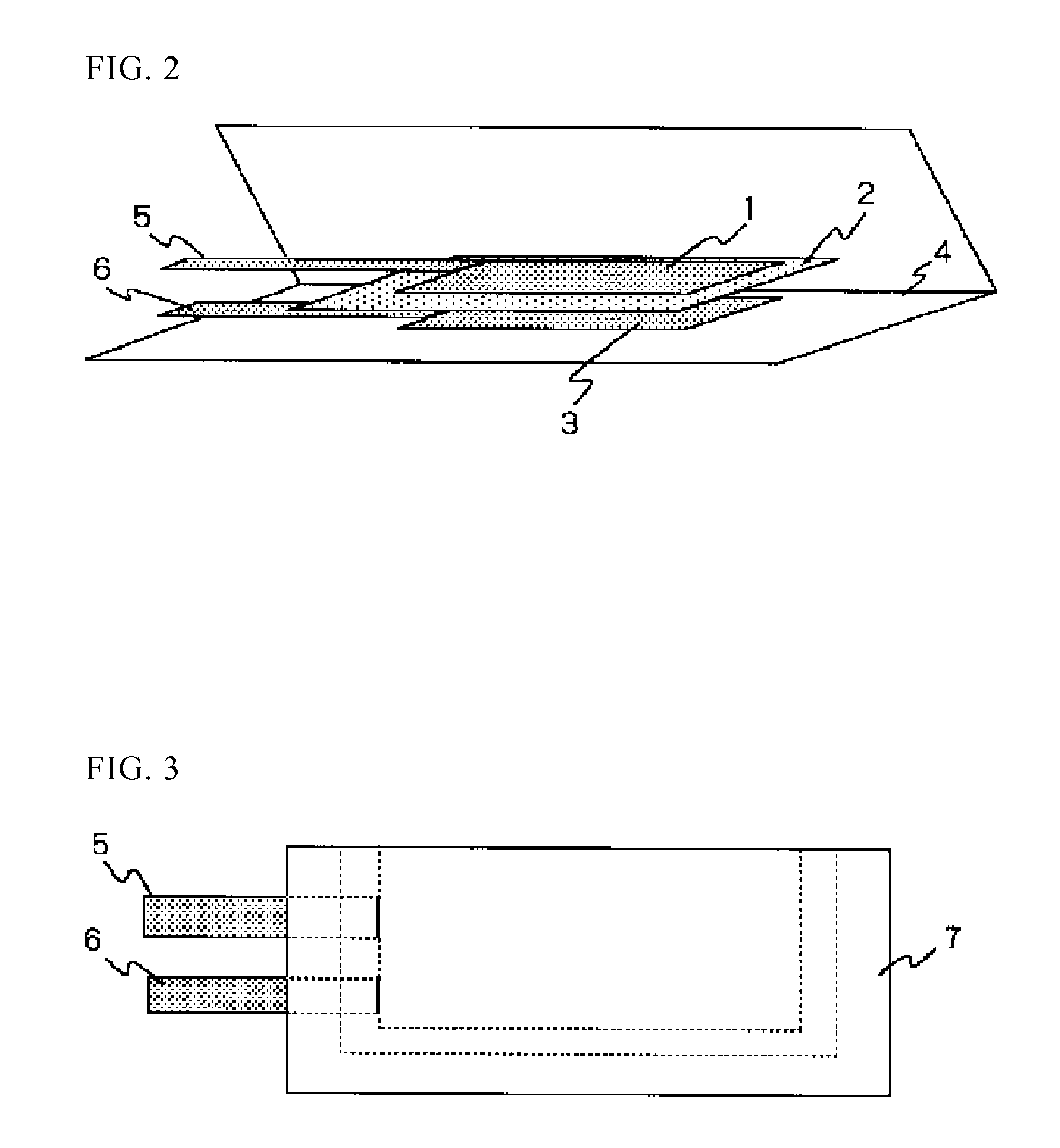Lithium Ion Secondary Battery
a secondary battery and lithium ion technology, applied in the field of lithium ion secondary batteries, can solve the problems of reducing affecting the performance of the battery, and affecting the safety of the battery, so as to suppress the deterioration of the battery performance, and enhance the affinity with the electrolyte
- Summary
- Abstract
- Description
- Claims
- Application Information
AI Technical Summary
Benefits of technology
Problems solved by technology
Method used
Image
Examples
example 1
[0059]Molecular sieves were added to styrene [Z1=vinyl group, X1=none, A=C6H5, manufactured by Wako Pure Chemical Industries, Ltd.] and diethylene glycol monomethyl ether methacrylate [Z2=methacryl group, Y═(CH2CH2O)2CH3, manufactured by Tokyo Chemical Industry Co., Ltd] as the starting monomers, and left it for one day and one night to remove the water content contained in the monomers. Then, the starting monomers were purified by distillation under a reduced pressure.
[0060]The purified styrene [75 mmol, 7.81 g] and diethylene glycol monomethyl ether methacrylate [25 mmol, 4.71 g] were mixed. Azobisisobutyronitrile (AIBN) was added as a polymerization initiator by 1 wt % of the entire monomers' weight and stirred till AIBN was dissolved. Then, the reaction solution was tightly sealed and reacted in an oil bath at 60° C. for 3 hours. After the completion of the reaction, the reaction solution was added to 200 mL methanol to obtain white precipitates. Then, the solution was filtered ...
example 2
[0064]Investigation was conducted by the same method as in Example 1 except for changing the concentration of the polymer A to 5 wt %.
[0065]The manufactured battery had a battery capacity of 2.2 mAh, a DC resistance of 14Ω and a cycle characteristic of 0.95.
[0066]A battery was manufactured separately under the same conditions and an overcharge test was conducted. The reaction voltage of the polymer A was 5.1 V and abrupt increase of the overvoltage was observed. The increasing rate was 2.5 (V / mAh). It was 4.4 (Vcm2 / mAh) when converted to the current density. The DC resistance after the overcharge test was 42Ω.
example 3
[0067]Investigation was conducted by the same method as in Example 1 except for changing the concentration of the polymer A to 10 wt %.
[0068]The manufactured battery had a battery capacity of 2.0 mAh, a DC resistance of 20Ω and a cycle characteristic of 0.95.
[0069]A battery was manufactured separately under the same conditions and an overcharge test was conducted. The reaction voltage of the polymer A was 5.1 V and abrupt increase of the overvoltage was observed. The increasing rate was 2.3 (V / mAh). It was 4.1 (Vcm2 / mAh) when converted to the current density. The DC resistance after the overcharge test was 54Ω.
PUM
 Login to View More
Login to View More Abstract
Description
Claims
Application Information
 Login to View More
Login to View More - R&D
- Intellectual Property
- Life Sciences
- Materials
- Tech Scout
- Unparalleled Data Quality
- Higher Quality Content
- 60% Fewer Hallucinations
Browse by: Latest US Patents, China's latest patents, Technical Efficacy Thesaurus, Application Domain, Technology Topic, Popular Technical Reports.
© 2025 PatSnap. All rights reserved.Legal|Privacy policy|Modern Slavery Act Transparency Statement|Sitemap|About US| Contact US: help@patsnap.com



